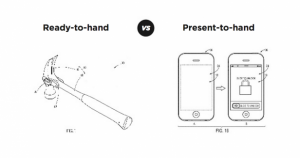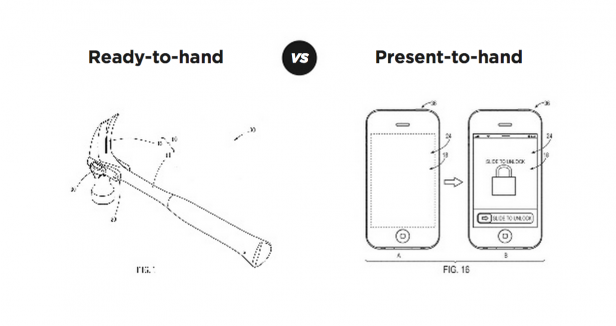 By John Pavlus from MIT Technology Review:
By John Pavlus from MIT Technology Review:
The first real-world demo of Google Glass’s user interface made me laugh out loud. Forget the tiny touchpad on your temples you’ll be fussing with, or the constant “OK Glass” utterances-to-nobody: the supposedly subtle “gestural” interaction they came up with–snapping your chin upwards to activate the glasses, in a kind of twitchy, tech-augmented version of the “bro nod”–made the guy look like he was operating his own body like a crude marionette. The most “intuitive” thing we know how to do–move our own bodies–reduced to an awkward, device-mediated pantomime: this is “getting technology out of the way”?
Don’t worry, though–in a couple years, we’ll be apparently able to use future iterations of Glass much less weirdly. A Redditor discovered some code implying that we’ll be able to snap photos merely by winking. What could be more natural and effortless than that? Designers at Fjord speculate that these kinds of body-based micro-interactions are the future of interface design. “Why swipe your arm when you can just rub your fingers together,” they write. “What could be more natural than staring at something to select it, nodding to approve something?… For privacy, you’ll be able to use imperceptible movements, or even hidden ones such as flicking your tongue across your teeth.”
These designers think that the difference between effortless tongue-flicking and Glass’s crude chin-snapping is simply one of refinement. I’m not so sure. To me they both seem equally alienating–I don’t think we want our bodies to be UIs.
…
Heidegger’s concept of “ready to hand” describes a tool that, when used, feels like an extension of yourself that you “act through”. When you drive a nail with a hammer, you feel as though you are acting directly on the nail, not “asking” the hammer to do something for you. In contrast, “present at hand” describes a tool that, in use, causes you to “bump up against some aspect of its nature that makes you focus on it as an entity,” as Matt Webb of BERG writes.




